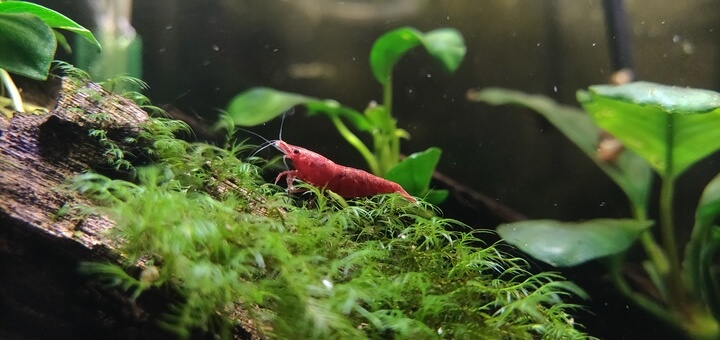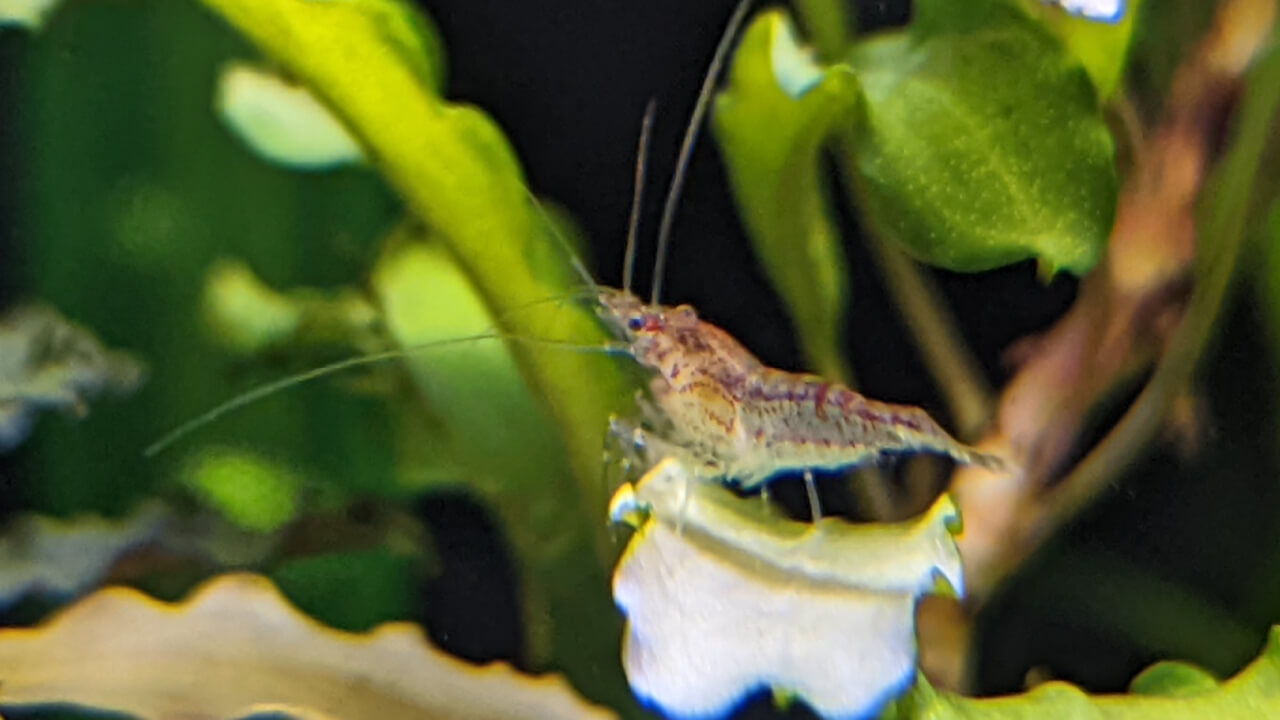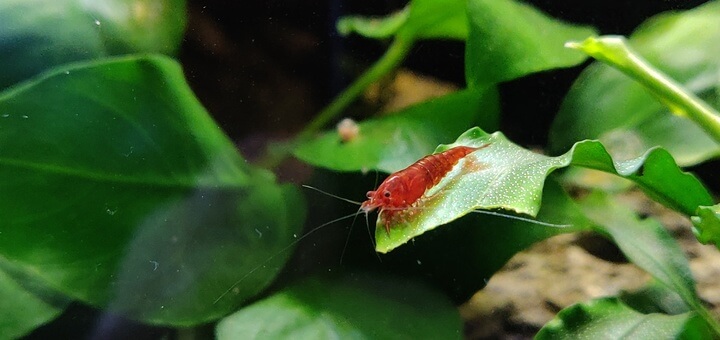Water parameters
- pH
- 6.5 - 8.0
- GH
- 4 - 10
- KH
- 1 - 8
- TDS
- 100 - 250
- Temperature
-
15 - 30 °C
59 - 86 °F
Facts
Difficulty level- Easy
Lifespan- 1 - 2 years
Origin- Taiwan
Adult size- 30 mm / 1.2 inches
Red Cherries are the most popular and recognisable type in the aquarium hobby, partly because they’re among the easiest to keep. They belong to the Neocaridina species which is sometimes known as hard water shrimp as they can tolerate relatively high GH and KH levels.
Their strong red colour also makes a great contrast to the leafy greens in a heavily planted tank.

An adult can grow to be around 3 cm (1.2 inches) in size.
Grades
There are lots of different names for fairly similar looking grades of this shrimp.
High grades are sometimes called Bloody Mary or Painted Fire Red and are a strong, deep red colour with solid colour legs too.
Medium grades might be Red Fire, High Grade Sakura, and will just be a slightly weaker or less consistent colour compared to the higher grades.
Low grades like Sakura will either be fairly spotty in colour, or anywhere from mostly transparent with red dots, to a consistent but translucent light red. The image below shows a very low grade Red Cherry shrimp which also looks quite close to a “wild type” morph.

Care
The Red Cherry, just like all other Neocaridina types make a fantastic choice for a first shrimp.
They’re among the hardiest of all shrimp, thriving in a wide range of water parameters. A KH range of 1-8 and a GH range of 4-10 mean they should fit right in with most home aquariums with low risk of molting problems. In a healthy tank, they’ll normally live for around 1-2 years.

Unless you live in a very cold climate, Red Cherries don’t require a heater. They should be fine as long as your room stays within the 15-30 °C (59-86 °F) range all year round.
A general rule for freshwater dwarf shrimp is to have a minimum tank size of 5 gallons (19 liters), but 10 gallons (38 liters) and larger is recommended.
Diet
Most freshwater dwarf shrimp will eat the same types of foods. They’ll spend the vast majority of their time moving around the aquarium in search of tiny bits of food like biofilm and algae, which can grow on almost any surface. If your tank is mature and heavily planted, they’ll probably have plenty of natural food to eat already.
If you’re not sure they’re getting enough to eat, there are lots of different foods for your shrimp like algae wafers, bee pollen, shrimp pellets, blanched vegetables, etc.
Giving your shrimp a variety of different foods will make it more likely they’re getting all the nutrients they need to thrive.
Tank mates
Amano shrimp are quite common tank mates with Red Cherries. The Amano can grow to be a bit larger, and with the different colours and patterns, they stand out from the other Neocaridina. There’s also no risk of interbreeding as they’re a different species which also require brackish water for their young.
Most aquatic snails will be compatible tank mates here too as they generally prefer harder water with a pH above 7.
If you want to maintain a strong red colour in your tank, you’ll want to avoid mixing other Neocaridina in too. Allowing different colour Neos to breed together weakens the strength of both colours.
Find the ideal water parameters and compatible tank mates for Red Cherry shrimp.
It’s sometimes possible to keep smaller fish like Neon Tetras in a shrimp tank. There is a risk that the fish will see your shrimp as food however, so you should make sure they’ve got plenty of hiding places if you wanted to try this. The risk of being eaten is much higher for baby shrimp, so if you’re planning to breed your shrimp it’s highly recommended not to have any fish in the same tank.
Breeding
You can breed a Red Cherry with a Blue Jelly, but unfortunately that doesn’t the babies will be a “Purple Belly”.
Unlike Caridina shrimp, when two different colour Neos are bred together the result is typically a lower grade version of one of the parents. Sometimes the babies can jump straight to a very low grade red, or a “wild type” which is mostly translucent with brown spots.
With consistent culling (moving to another tank) of the lower grade reds, you should be able to gradually improve the grade, potentially all the way to Painted Fire Red. Obviously there are no guarantees with nature, you’ll just have to be patient.
If you’re trying to build up a healthy population, you can read our page on how to breed shrimp for extra help.


